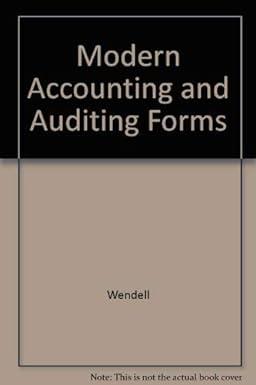Question
Court Decisions and Auditing Procedures A 1939 investigation by the SEC revealed that Coster and his confidants had stolen around $2.9 million of McKesson &
Court Decisions and Auditing Procedures
A 1939 investigation by the SEC revealed that Coster and his confidants had stolen around $2.9 million of McKesson & Robbinss cash in the previous 12 years. However, due to the lack of two then-not-required audit procedures, physical observation of inventory and direct confirmation of accounts receivable, Price Waterhouse failed to detect $19 million nonexistent assets (out of total assets of over $87 million) and $1.8 million gross profit on fictitious sales of $18 million that were included in McKessons 1937 certified financial statements.
Up until 1940, the auditor was allowed to rely on the representations of management concerning the accuracy of physical quantities and the costs of its inventory. The SEC criticized the accountants for inaccuracies in the corporations audited financial statements and set forth several findings in the McKesson & Robbins case:
- The accounting firm failed to employ that degree of vigilance, inquisitiveness, and analysis of the evidence available that is necessary in a professional undertaking and is recommended in all well-known and authoritative works on auditing.
- Although the accounting profession claims that the auditor is not a guarantor and should not be liable for fraud, the SEC ruled that the discovery of gross overstatements in the accounts is a major purpose of such an audit even though it [may] be conceded that [the audit] might not disclose every minor defalcation.
- The SEC advised the accounting profession to take physical inventories and to require confirmations of accounts and notes receivable.
- Page 356The SEC recommended that the board of directors nominate the auditors and that the activities of management be included in the audit.
The SEC made additional recommendations to the AICPA, including to distinguish auditing standards from auditing procedures. Also, the auditors certificate should state whether the audit was made in accordance with generally accepted auditing standards applicable in the circumstances. Subsequently, the AICPA adopted these procedures and eventually codified them in the Statement on Auditing Standards.
Answer the following discussion question:
Do you think that the inability of auditors to detect a financial statement misstatement due to gross deficiencies in internal controls over financial reporting should expose auditors to litigation? Why or why not?
Step by Step Solution
There are 3 Steps involved in it
Step: 1

Get Instant Access to Expert-Tailored Solutions
See step-by-step solutions with expert insights and AI powered tools for academic success
Step: 2

Step: 3

Ace Your Homework with AI
Get the answers you need in no time with our AI-driven, step-by-step assistance
Get Started


